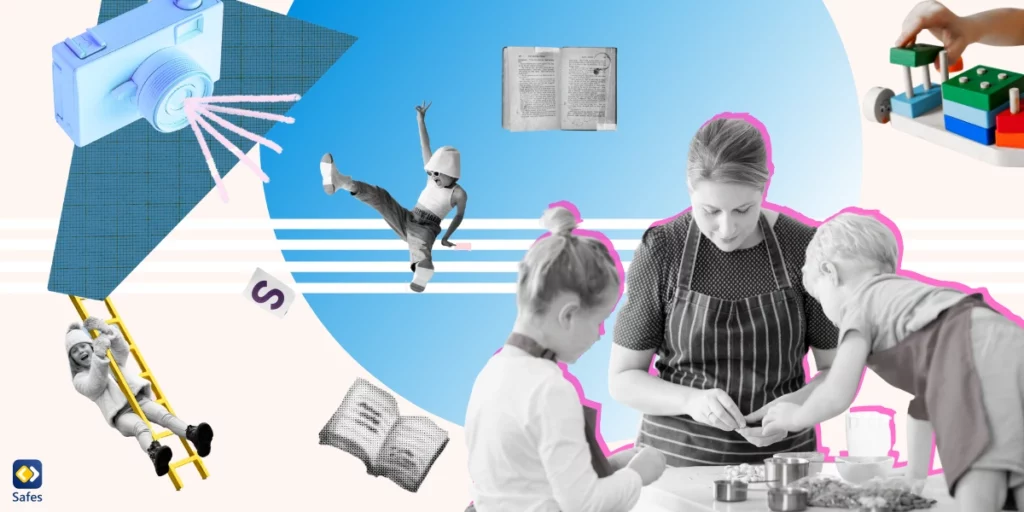You may have this experience, when one minute your child is all smiles and laughter, and the next, they’re throwing a tantrum over something as simple as the color of their cup. Dealing with a cranky kid can be one of the most challenging parts of parenting, as this counts as one of childhood behavioral issues. It’s exhausting, confusing, and sometimes you don’t know what to do. Don’t worry, you’re not the only parent dealing with this problem. Many parents face these tough moments, and there are effective ways to handle them.
In this post, we’ll explore some simple, practical strategies to help you handle your irritable child and bring peace back to your home. Moreover, we’ll discuss the reasons behind this kids behavior. So, if you want to know if your child is cranky, don’t miss the next part!
What Are the Signs of a Cranky Kid?
During the cranky kid age, typically between the ages of 2 and 5, it’s common for children to experience intense emotions and changes. But if you’re not sure if your child’s behaviors are categorized as being cranky, the irritable symptoms listed below will help you figure it out. Moreover, identifying when your child is cranky can help you address their needs more effectively. Early dealing with their crankiness prevents teenage tantrums and meltdowns when they get older.
- A cranky tired kid often cries or whines without a clear reason.
- They may get easily frustrated and lash out over small things.
- Frequent or intense tantrums can be a sign of crankiness.
- They might become more clingy and seek extra attention or comfort.
- They may refuse to follow instructions or do what they’re asked.
- They might lose interest in toys or activities they usually enjoy.
- A cranky child may eat less than usual or become very picky with food.
- Some children become more hyperactive or restless when they’re cranky.
- They might use negative language or express dissatisfaction more frequently.

Why Does My Child Get Suddenly Irritable?
Based on an article about irritability in children by Ellen Leibenluft, there is a genetic link between irritability, anxiety, and depression. It also reveals that about 40-60% of irritability can be inherited, which is similar to the genetic influence seen in anxiety and depression. However, environmental factors may also play a role in childhood irritability. Here are some common reasons, apart from genetics, for sudden irritability in children:
- Low blood sugar can make children cranky. If it’s been a while since they last ate, they might need a snack.
- Lack of sleep or feeling overtired can lead to sudden irritability.
- Too much noise, activity, or new experiences can overwhelm a child and cause irritability.
- Boredom or not having enough to do can also lead to crankiness.
- Even minor illnesses, like a cold or ear infection, can also be what causes irritability in children.
- Changes at home, such as a new sibling, moving, or parental stress, can affect a child’s mood.
- Struggling with a task or not being able to communicate effectively can cause sudden frustration and irritability.
- Disruptions to their normal schedule, such as missing a nap or skipping a meal, can throw off a child’s mood.
- Some children are more sensitive to their environment or changes, making them more prone to irritability.
- Physical changes, such as teething in younger children or growth spurts, can cause discomfort and irritability.
How to Deal with a Cranky Child?
Imagine your kid is playing with their toys and you offer them a snack. They get suddenly angry, throw the toy away, and start screaming. At this moment, your reaction should not be intense as it worsens the situation. Instead, you need to have a calm and mindful procedure. We have divided the process of dealing with a cranky child into two steps, as explained below.
Staying Calm & Checking for the Reason
Children often mirror the emotions of the adults around them. Stay calm, take deep breaths, speak in a soothing tone, and keep your body language relaxed. Also, remind yourself that your child’s crankiness is temporary. Then, ask simple questions or observe their behavior. Check if they’ve had enough sleep, if it’s been a while since their last meal, or if something in the environment is bothering them. As physical discomfort can cause crankiness, make sure your child’s clothes are comfortable and the temperature is appropriate. Check for signs of illness or discomfort that might need addressing.
Providing Comfort & Distractions
Now that you’ve created a relaxing and quiet space, hold them close, rock them gently, or sit with them in a quiet place. Sometimes, just being there for them can make a big difference. Keep healthy snacks handy. Offer fruits, nuts, cheese, or whole-grain crackers to provide a quick energy boost. Distracting your child can shift their focus away from what’s upsetting them. You can introduce a new toy, start a simple game, or take them for a walk. Changing the environment or activity can often help reset their mood. Mindfulness in children can be extremely helpful when they get cranky. Therefore, devote some time to practicing mindful activities with them, like as deep breathing.
With these calm down strategies for kids, you can change the negative patterns and make them feel understood, relaxed, and comforted. Don’t forget to praise your child for calming down or for any small positive behavior. Reward them with hugs, stickers, or a favorite activity. Furthermore,
Enough physical activity helps burn off excess energy and improve mood. So, encourage outdoor activities, like running, jumping, or playing a sport.

Final Word
It’s not easy to deal with a cranky child, but with patience, understanding, and effective strategies, it’s possible to overcome these parenting challenges. By identifying your child’s emotions and the root causes of crankiness, providing comfort and support, and fostering positive interactions, you can help them manage their sudden irritability more effectively.
We understand the importance of supporting parents in their journey of raising happy and healthy children. That’s why our parental control app, Safes, offers features designed to promote digital safety and well-being for your family. With Safes, you can monitor your child’s online activities, set screen time limits, block inappropriate content, and track their device usage. Safes provides you with every parental control option you need, just like the pre-built settings on your devices, such as Parental controls on Android, but with wider access to all the features! This way, you can ensure that your child’s digital experiences are safe, balanced, and conducive to their overall well-being. You can download Safes for Android and iOS today and start your free trial.




